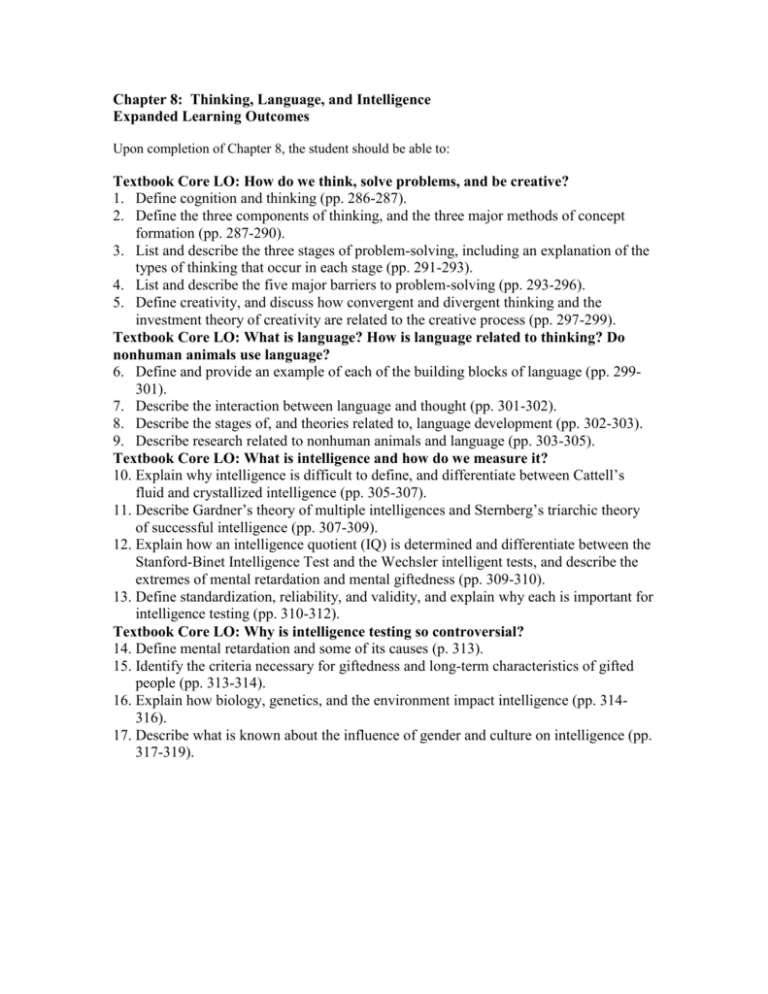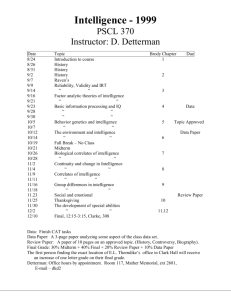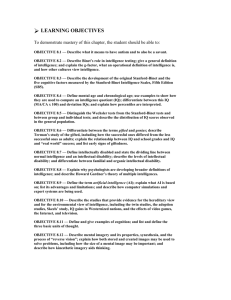Chapter 8: Thinking, Language and Intelligence
advertisement

Chapter 8: Thinking, Language, and Intelligence Expanded Learning Outcomes Upon completion of Chapter 8, the student should be able to: Textbook Core LO: How do we think, solve problems, and be creative? 1. Define cognition and thinking (pp. 286-287). 2. Define the three components of thinking, and the three major methods of concept formation (pp. 287-290). 3. List and describe the three stages of problem-solving, including an explanation of the types of thinking that occur in each stage (pp. 291-293). 4. List and describe the five major barriers to problem-solving (pp. 293-296). 5. Define creativity, and discuss how convergent and divergent thinking and the investment theory of creativity are related to the creative process (pp. 297-299). Textbook Core LO: What is language? How is language related to thinking? Do nonhuman animals use language? 6. Define and provide an example of each of the building blocks of language (pp. 299301). 7. Describe the interaction between language and thought (pp. 301-302). 8. Describe the stages of, and theories related to, language development (pp. 302-303). 9. Describe research related to nonhuman animals and language (pp. 303-305). Textbook Core LO: What is intelligence and how do we measure it? 10. Explain why intelligence is difficult to define, and differentiate between Cattell’s fluid and crystallized intelligence (pp. 305-307). 11. Describe Gardner’s theory of multiple intelligences and Sternberg’s triarchic theory of successful intelligence (pp. 307-309). 12. Explain how an intelligence quotient (IQ) is determined and differentiate between the Stanford-Binet Intelligence Test and the Wechsler intelligent tests, and describe the extremes of mental retardation and mental giftedness (pp. 309-310). 13. Define standardization, reliability, and validity, and explain why each is important for intelligence testing (pp. 310-312). Textbook Core LO: Why is intelligence testing so controversial? 14. Define mental retardation and some of its causes (p. 313). 15. Identify the criteria necessary for giftedness and long-term characteristics of gifted people (pp. 313-314). 16. Explain how biology, genetics, and the environment impact intelligence (pp. 314316). 17. Describe what is known about the influence of gender and culture on intelligence (pp. 317-319).







